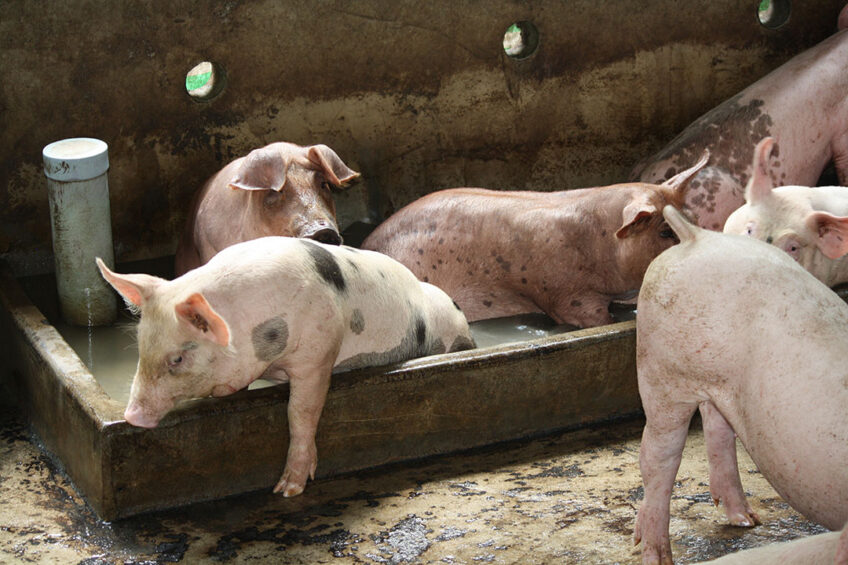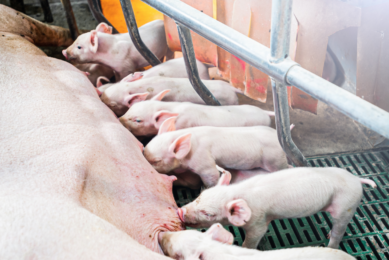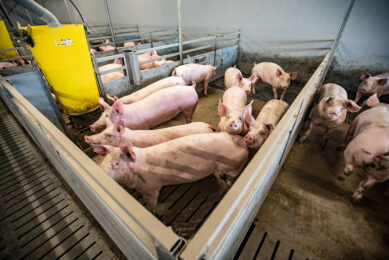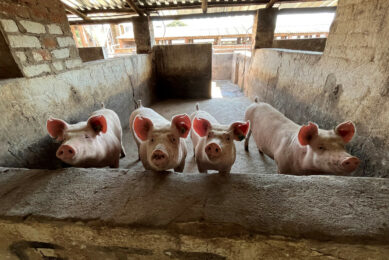Adapting to climate and market change

Warnings about climate change are far from new. What marks summer 2022, is that it has become clear that the season is no longer a warning, but that it has become a reality that we have to face immediately rather than later. The many extreme heat waves, wildfires, droughts and floods that occur simultaneously across the globe show that climate change is here now, and we need to adapt.
In one of the news interviews about a wildfire a resident said, “I never thought it would happen to us.” This thought will be similar for many people and prevents fear, but in these days it is better to be prepared rather than ignorant. Animal production and welfare may be at high risk when an emergency happens. As the pig sector is so international, occurrences on a local or national scale will affect profit margins on a world wide scale. To prepare the best we can, it is good to minimise risks on what is under threat: feed, water and pigs.
Feed
Feed is the main cost in pig production and everyone is hit hard by the increasing costs of grain. We therefore have to consider alternative routes. Luckily, pigs are opportunistic omnivores that can digest a lot of different feed types. One option is to use innovative new feeds such as algae while another option is to steer for a lower growth but also lower feed costs. Choosing a less highly productive breed may result in more robust animals, which can counterbalance other challenges as well.
Water
Water is the most important commodity to be aware of. In just one week in late July 2022, Mexico declared a state of emergency over the worsening droughts, California enforced water restrictions and even England gave a drought warning. We cannot do much about the national water supply but what we can do is to invest in local (or own) water retention systems. This can include, for example, harvesting rain water and incorporating ponds in the landscape. Planting vegetation to retain the water and to provide shade creates a microclimate around the farm that can be a few degrees cooler and provides a back up water supply.
Heat stress can be prevented through management, building design, nutrition and genetics
Heat stress
Heat stress in an immediate concern for pig production and welfare. Heat stress can be prevented through management, building design, nutrition and genetics. For example, some breeds are more resilient to higher temperatures than others. There are many solutions that are scientifically studied as well as examples that can be drawn from farms in tropical countries. Pigs regulate their body temperature through wallowing behaviour. Outdoors a mudpool will be the perfect wallow but indoors their only option, if any, is to wallow in urine and faeces. This is undesired from a hygiene and meat quality perspective and it is therefore good to explore alternative ways for pigs to thermoregulate.
Sustainable farming
Sustainable farming is often mentioned in relation to emmissions, public perception and animal welfare. “Sustainable” has become a buzzword that starts to lose its practicality. Practically, we have to make sure that pig farms can sustain themselves in spite of the emerging threats. This may mean a reconsideration of the current system in order for pigs and pig farms to thrive rather than survive.











